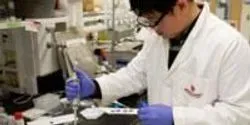News

Peeled tomatoes make a tasty, versatile and time-saving ingredient for hearty winter stews, homemade soups or classic casseroles. In experiments with more than 6,000 field-ripened Roma-style (sometimes called “plum”) tomatoes, U.S. Department of Agriculture (USDA) scientist Zhongli Pan and his industry and university colleagues have shown that using infrared heating to simplify removal of the tomatoes’ tight-fitting peels may offer advantages over other peeling technologies.

Salk scientists discover how a "mini-brain" in the spinal cord aids in balance.

Sites where DNA is damaged may cause a molecule that slides along the DNA strand to scan for damage to slow on its patrol, delaying it long enough to recognize and initiate repair. The finding suggests that the delay itself may be the key that allows the protein molecule to find its target, according to researchers at the University of Illinois at Chicago.

As thesis writing approached, University of Wisconsin-Madison graduate student Veronica Berns faced a conundrum. She knew how hard it was to describe her work to friends and family — indeed, anybody outside the tight clan of structural chemists. And that was particularly true since she concentrated on a category of should-be-impossible structures called “quasicrystals.”

As part of its ongoing commitment to offering solutions for pressing food fraud issues, the Institute of Food Technologists (IFT) Global Food Traceability Center (GFTC) submitted written comments on how to most effectively implement the recommendations from the Presidential Task Force on Combatting Illegal, Unreported and Unregulated (IUU) Fishing and Seafood Fraud.
















